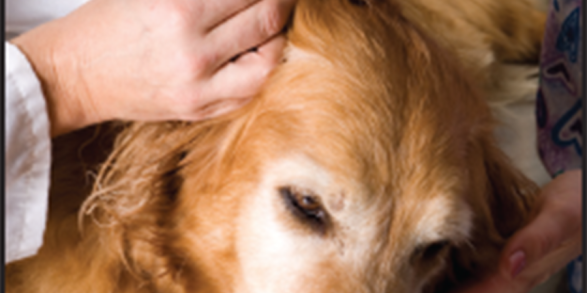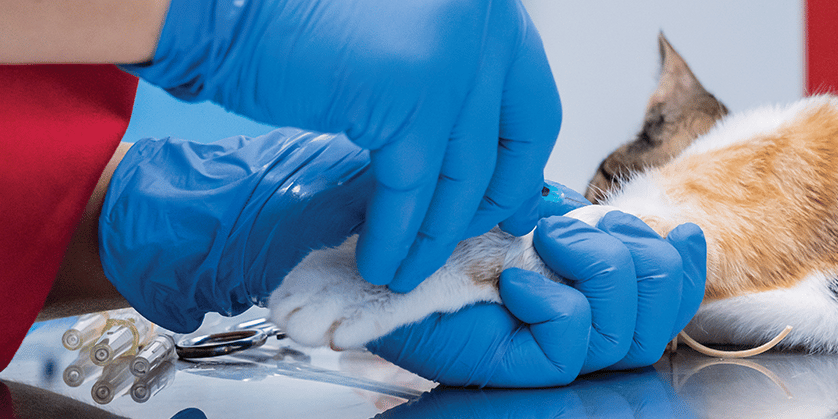FDA Announces Live Webinar on the Animal Drug Manufacturing System for Reporting Supply Chain Data

June 6, 2022 Today the U.S. Food and Drug Administration is announcing a live webinar titled, “Reporting of Veterinary Drug Supply Chain Information Using the Animal Drug Manufacturing System (ADMS) eSubmitter Tool.” The webinar is intended for animal drug manufacturers, US agents and consultants, and government agencies involved in the pharmaceutical supply chain. The eSubmitter tool is a free software used to support the creation of electronic, secure submissions to the FDA’s Center for Veterinary Medicine (CVM) for review. The webinar will take place from 1:00-3:30pm ET on Wednesday, June 22, via Zoom, and is intended to provide information about new enhancements to the system. In December 2021, the FDA announced an eSubmitter update intended to enable animal drug manufacturers to provide more complete facility information, particularly about the establishments that are actively used in their manufacturing processes, in order to provide supply chain data that strengthened the FDA’s ability to monitor the animal drug supply chain. This facility information is required to be submitted to the agency. This enhancement was part of the ADMS, a project funded by The Coronavirus Aid, Relief, and Economic Security Act (CARES Act) in response to the COVID-19 public health emergency. The ADMS webinar will explain the rationale for collection of supply chain information; include live demonstrations of users entering information into the various ADMS Books and eSubmitter templates, focused on the updated functionality; and will provide a live Q&A section where users can ask questions about the system and the new enhancement for sharing supply chain information. Collecting facility information will enable CVM to rapidly access information on animal drug products, active pharmaceutical ingredients, and the status of manufacturing sites, so that the agency can identify and address critical facilities and animal drugs impacted by emerging diseases or natural disasters and collaborate with industry to identify solutions to potential animal drug shortages. This step brings CVM in line with the FDA’s other medical product centers that already require human drug and biologic manufacturers to provide facility information and operational status. To register for the webinar, please visit Webinar Registration – Zoom (zoomgov.com)External Link Disclaimer and complete the required fields. If you would like to submit questions for the Q&A portion of the webinar in advance, please submit them to cvmesubmitter@fda.hhs.gov with the subject line “Live ADMS Webinar” by Tuesday, June 17. The webinar will be recorded and posted to CVM’s webinar webpage for those unable to make the live session. [Source: U.S. Food & Drug Administration]
New inhaled immunotherapy fights lung cancer in dogs

Author: Paul Imrie (UC Davis oncologist) Study carried out by medical and veterinary researchers at UC Davis and other institutions use approach where naturally produced protein triggers T-cells and natural killer cells when inhaled. Scientists have discovered that a protein naturally produced by the body could be an important new immunotherapy drug against cancer. Medical and veterinary oncologists at UC Davis and other institutions have carried out a study in 21 pet dogs of various breeds with metastatic lung disease from osteosarcoma and melanoma by treating them with inhaled interleukin-15 (IL-15). It was the first clinical trial of its kind, and involved Robert Canter with UC Davis Comprehensive Cancer Center and canine oncologist Robert Rebhun with the UC Davis School of Veterinary Medicine. Inhaled Dr Canter said: “No one previously had administered IL-15 as an inhaled treatment in dogs to deliver it directly to the site of the cancer. We came up with that idea as a means of reducing exposure to the rest of the body to improve the benefit-risk ratio, improve the immune stimulating effects, and reduce toxicity. “In this study, we used interleukin-15 to reinvigorate the immune system to make it recognise the cancer cells that had evaded the immune system and eliminate them.” Immune response The study, published in the Journal for ImmunoTherapy of Cancer, showed amplified concentrations of IL-15 stimulate immune response defences against some cancers in dogs. Dr Canter added: “As part of our comparative oncology research, we are strong advocates of clinical trials in companion dogs – especially for immunotherapy – as a way to speed bench-to-bedside translation. “The cancers that afflict dogs, including sarcomas, brain tumours, lymphoma and melanoma, are incredibly similar to cancers that humans develop.” Source: Vettimes.com.uk
CIPS Launches Campaign to Empower Pet Retailers in China

The campaign is a strategic move of CIPS to enhance its domestic buyers network in China. In April, China International Pet Show (CIPS) launched the “Empowering 10,000 China Pet Retailers” campaign. The team has held training seminars in six cities so far and plans to hold 200 seminars and events through the end of the year. The campaign’s key activity is the fine grooming and skin care seminar, which includes lectures and practice to improve pet store groomers’ skills. The systematic training is designed especially for pet stores to meet customer needs and increase their return on service. The seminar also includes store management skills, marketing techniques and niche classes on subjects such as bakery, photography, healthcare and more. The first group of 25 teachers have finished their training and started classes in various cities, and the organizer expects a team of 100 teachers join the campaign in the next couple of months. More than 400 store owners and groomers have participated in the seminar thus far. “The seminars differ in size, from a dozen groomers to hundreds of participants. It is not a once for all event, but a continuous systematic training process,” said Lu Peng, general manager of CIPS. “We believe a healthy and sustainable retailing system is what China desperately need now. Pet stores services differ them from online e-commerce sales, which focuses more on products. Pet owners need the person-to-person communication now more than any time before.” The 2022 show will be held both online and in person November 17-20 in Guangzhou, China. [source: Pet Business]
Comparing Vet-calibrated Portable Blood Glucose Monitors For Dogs

A new study, published in the latest issue of the Journal of Small Animal Practice (JSAP), compared both the AccuTell and AlphaTrak2 Portable Blood Glucose Monitors (PBGMs) against a reference method – the hexokinase reaction method. Although the accuracy of one of the most well-known veterinary PBGMs, the AlphaTrak, has been investigated, not enough is known about the accuracy of such monitors and standards have not yet been designed for veterinary PBGMs. In the study “Comparative accuracy of two veterinary-calibrated point-of-care glucometres for measurement of blood glucose concentration in dogs” blood was sampled from client and staff-owned dogs above 6 months of age, of various breeds and health status. This was the first study to investigate AccuTell and the first published evidence comparing AlphaTrak2 with a reference method. The study aimed to determine the accuracy of both veterinary-calibrated PBGMs as well as how useful they are in clinical decision making and to assess the effect that packed cell volume (PCV) (known to affect the reliability of blood glucose concentration measurement in dogs) has on blood glucose concentration using the two PBGMs. AccuTell was found to be more accurate and useful in a clinical setting than AlphaTrak2. Both PBGMs were inaccurate in comparison with the hexokinase reaction method, and although they have potential for standard clinical use, unexpected blood glucose concentrations need to be checked by the hexokinase reaction method. In addition, measurement of blood glucose concentration by the AlphaTrak2 was affected by PCV whereas measurement by the AccuTell was not. Nicola Di Girolamo, Editor of JSAP concluded: “We oftentimes think that an instrument that is developed specifically for our patients will provide satisfactorily results on most occasions. Instead, studies such as the one presented here, are critical to understand whether the ‘numbers’ provided by an instrument are reliable for clinical use. The authors provided 95% limits of agreements to their results. This value is of great help for clinicians, since it shows the difference expected between the instrument and the reference standard in the majority of occasions.” The full article can be found in the July issue of the Journal of Small Animal Practice and can be read online here: https://onlinelibrary.wiley.com/doi/epdf/10.1111/jsap.13491 1 Wolfenden, G, James, FE, Hung, LHT, Bruce, M, and Thompson, M (2022) Comparative accuracy of two veterinary-calibrated point-of-care glucometres for measurement of blood glucose concentration in dogs Journal of Small Animal Practice, Available at: https://onlinelibrary.wiley.com/doi/epdf/10.1111/jsap.13491 Source: VetClick
Survey Results Released From InterZoo 2022

A survey about the pet trade fair revealed satisfaction amongst attendees. According to a survey from Interzoo 2022, held in Nuremberg this past May by Wirtschaftsgemeinschaft Zoologischer Fachbetriebe GmbH (WZF), more than 90 percent of survey respondents reported planning to attend the show again. The pet industry trade fair attracted 27,861 trade visitors from 129 countries and 1,328 exhibitors from 59 countries. Other survey highlights include: Amongst exhibitors, 95 percent were satisfied or very satisfied with the overall success of the event; More than 94 percent of exhibitors achieved their specific trade fair objectives. 96 percent of exhibitors were pleased with the quality of trade visitors at their stands; 97 percent of exhibitors reached the most important target groups for their products or services; 96 percent made completely new business contacts, and nine out of ten exhibitors believe that the trade fair will result in new business. Most international visitors came from Italy (1,653), followed by Spain (1,174), the Netherlands (1,089), and Great Britain and Northern Ireland (1,060); 966 trade visitors came from France, and 958 came from Poland; Germany was represented with 7,698 attendees. Compared with the previous years, more trade visitors from larger companies with more employees visited Interzoo 2022; The percentage of online sellers (15.2 percent) was also much higher (2018: 8.8 percent). Nearly all trade visitors (98 percent) were satisfied or very satisfied with the general offering; 98 percent of trade fair visitors said that the information and contact opportunities at the trade fair met their expectations; 96 percent of visitors deemed it to be a success, and almost all of them (97 percent) said: “I benefitted from Interzoo.” More than 50 start-ups drew attention at the Sponsored Pavilion and the international Start-up Area in Hall 11; The “Fresh Ideas Stage” offered for the first time at Interzoo 2022 gave an added boost to many market entrants. “It was plain to see that the international pet industry made the most of the long-awaited industry platform Interzoo to present its latest products and services to the trade community and establish new sales partnerships,” said Norbert Holthenrich, president of Interzoo’s honorary sponsor, the German Pet Trade & Industry Association. “The positive atmosphere and the still extremely high percentage of international visitors (72.5 percent) confirmed Interzoo’s status as the world’s leading trade fair.” The next Interzoo will be held in Nuremberg from Tuesday, May 7 to Friday, May 10 2024. [Source: Pet Business Staff]
Dublin Vets Warn Pet Owners To Be Vigilant Of Parvovirus Outbreak

A leading Ireland vet practice is warning dog owners to be vigilant after a confirmed outbreak of a potentially-lethal condition in the region. MyVet, which is owned by Linnaeus and has surgeries in Lucan and Firhouse, has issued the warning in the wake of several confirmed cases of parvovirus, a viral infection which is extremely contagious and often leads to death if left untreated. The virus brings around symptoms of severe vomiting and diarrhoea, and puppies who have not had their full vaccination course are at particularly high risk. Shauna Quinn, lead veterinary surgeon at MyVet, said: “Parvovirus can have quite a severe impact on affected dogs and can impact dogs of all breeds and age. “The virus can spread through direct contact or infected faeces and affected dogs can even spread the virus after recovery for up to eight weeks. “Symptoms include fever, lethargy, lack of appetite, uncontrollable vomiting and diarrhoea, often with blood. “Unfortunately, the virus is highly resistant and can remain in the environment for many months outside, so it’s important to spread the word about it so that more dog owners can be aware of its severity, take precautions and be able to spot the symptoms.” The best way to protect against parvovirus is to have dogs vaccinated as puppies, with an additional booster vaccination usually done at one year of age. “If you think your dog is displaying any symptoms of parvovirus, get in touch with your local vet straight away. There is an instant test that can be done on a faecal sample or swabs, so treatment can be started immediately,” added Shauna. For more information about My Vet, visit www.myvet.ie. For more information about Linnaeus, visit www.linnaeusgroup.co.uk or search for Linnaeus on social media. [Source: Vetclick] [Photo: Shauna Quinn, lead veterinary surgeon at MyVet]
Taiwan wants to regulate the pet industry to ensure animal welfare

The Asian nation expects to reach 12 million dogs and cats by 2040. Taiwan’s Council of Agriculture (COA) department seeks to propose some amendments to the legislation that would give incentives to local manufacturers to invest in more natural pet food options. According to the Taipei Times, the authorities are considering promoting the use of local agricultural grain options such as corn. COA Minister Chen Chi-chung claimed that pets deserve welfare protection “just as people do.” Official data show that the Taiwanese pet industry is worth NT$50 billion ($1.74B) annually and that 2.3 million pet dogs and cats are officially registered in the country. In April, the Taiwanese government established a pet management division responsible for the regulation of the pet industry, pet ownership and welfare. The department has an annual budget of NT$130 million (US$4.5M).[Source: GlobalPETS][Image: GlobalPETS news team]
Robots to the Rescue of Animals

Animal testing in the human medical field has come at the high price of many lives. Could AI be the next step in product testing? Animal testing has resulted in major medical innovations, such as vaccines, antibiotics, and drugs like insulin, but they have come at a high cost paid by the animals involved. Additionally, the majority of such testing often fails to be of any benefit. In 2004, the U.S. Food and Drug Administration (FDA) estimated that 92% of drugs that pass preclinical tests, including animal tests, do not reach the market. Despite efforts to improve the predictability of animal testing, the failure rate is now closer to 96%.1 A review of treatment trials for specific human diseases, such as head injury, respiratory distress syndrome, osteoporosis, and stroke, found that the animal experiments accurately predict how they will behave in people only 50% of the time.1 The marketing of drugs and other pharmaceutical products in the U.S. is controlled by the Federal Food, Drug, and Cosmetic Act (FFDCA), which empowers the FDA’s Center for Drug Evaluation and Research to require extensive toxicity testing on animals before a new drug is deemed “safe” for marketing. It typically takes 10 to 15 years and an investment of an average of $1 billion for a new drug to come to market. This antiquated process slows progress, drives up drug costs, and sacrifices countless animals. Efforts to reduce, refine, and replace testing on animals have been making progress over the last decade. Recently, the U.S. Environmental Protection Agency committed to eliminating all mammal study requests and funding by 2035, and the House Energy and Commerce Committee passed the FDA Modernization Act, strengthening the chance of enactment of a measure that would eliminate a statutory animal testing mandate for new drug development and reform the drug approval process. An amendment to the FFDCA would allow manufacturers to use alternatives to investigate the safety and effectiveness of a drug. [Author: Simon R. Platt, BVM&S, MRCVS, DACVIM (Neurology), DECVN] [Source: Today’s Veterinary Practice] [Image: ]
Clinical Application of Renal Biomarkers

Authors: Autumn N. Harris, DVM, DACVIM (SAIM), & Eleanor Brown, DVM While new biomarkers may help in the detection of kidney disease, it is unlikely that a single biomarker will be able to provide a global picture of kidney function or injury in an individual animal. idney disease in dogs and cats is common; estimated prevalence ranges from 7% to 20%.1 The International Renal Interest Society (IRIS) has established guidelines for clinical staging and grading of kidney disease with criteria for acute kidney injury (AKI) and chronic kidney disease (CKD). These guidelines have helped veterinarians identify cases in which there is kidney injury or disease that might be mitigated by therapeutic intervention. Despite the clinical significance of kidney disease, however, early detection of kidney injury remains challenging. The most accurate assessment of renal function is considered to be measurement of glomerular filtration rate (GFR).2,3 However, this procedure is labor-intensive and time-consuming, making it an impractical test in daily clinical practice. Indirect assessment of renal function using serum creatinine and blood urea nitrogen (BUN) is easy to perform, and these tests are widely available. However, both analytes have well-established limitations, resulting in a lack of sensitivity and specificity for detection of kidney disease.4 These values typically do not increase until approximately 75% of the functional renal mass is lost.5,6 Identifying novel biomarkers for kidney injury and disease is appealing and would provide additional tools for diagnosing and monitoring affected dogs and cats. Ideal biomarkers for the detection of kidney disease would be specific (i.e., not affected by comorbidities), strongly correlated with GFR, and more sensitive than serum creatinine for detecting disease. In addition, ideal biomarkers could be used to determine severity and location of the injury as well as to monitor disease progression or response to therapy, and testing would be readily available from a reference laboratory or as an in-clinic assay. A few promising candidates have been found to be useful for evaluating kidney disease in clinical and research settings (FIGURE 1). This review describes the current evidence with regard to widely available renal biomarkers for dogs and cats and their potential utility in clinical practice. Read more… [Source: Today’s Veterinary Practice] [Image: GaiBru Photo/shutterstock.com]
Human-to-dog monkeypox transmission case reported

he first potential case of human-to-dog monkeypox transmission has been documented by researchers in France. The viral disease was declared a public health emergency of international concern on July 23 by Tedros Adhanom Ghebreyesus, director-general of the World Health Organization. On. Aug. 4, the Biden administration declared monkeypox to be a public health emergency in the United States. As of Aug. 17, there were 39,434 reported human cases globally and 13,516 in the United States, according to the Centers for Disease Control and Prevention. The first case of the current outbreak of monkeypox was found May 6 in the U.K. in a person who had traveled to Nigeria. Subsequent cases of the virus have generally occurred among humans through close contact with lesions, bodily fluids, or respiratory droplets from infected individuals. On June 10, a team from Sorbonne University in Paris recorded two human cases of infection with monkeypox virus connected with a case in a dog. The researchers described their findings in an article published Aug. 10 in The Lancet. The article states that two men who were living together had anal skin ulcers about a week after sex with other male partners. Twelve days after the onset of monkeypox symptoms, their 4-year-old male Italian Greyhound tested positive for the virus. The dog, who co-slept with the men, had red, tender bumps with white pus on its abdomen and an anal skin ulcer. [Source: AVMA]
